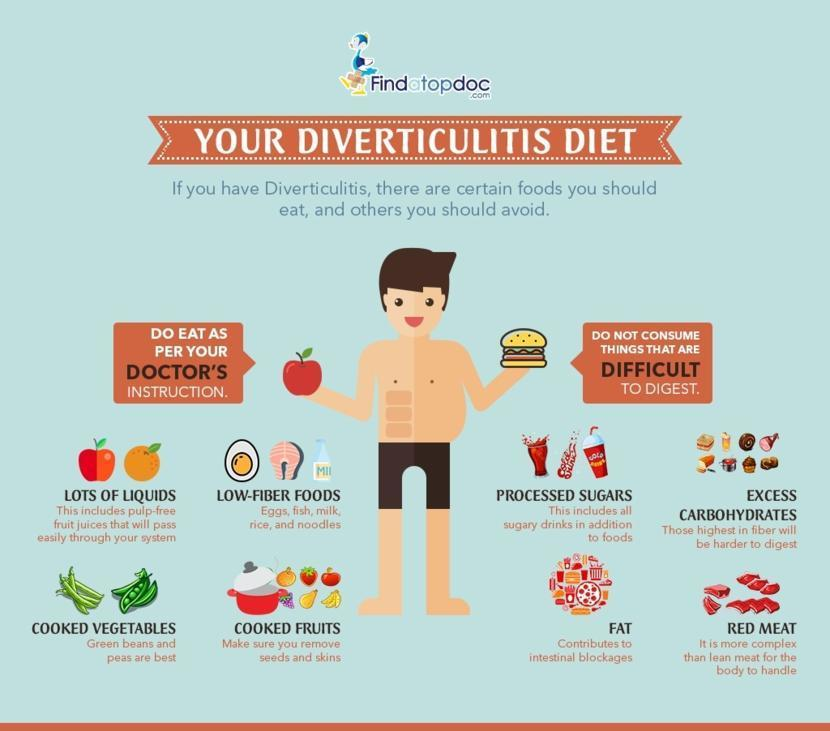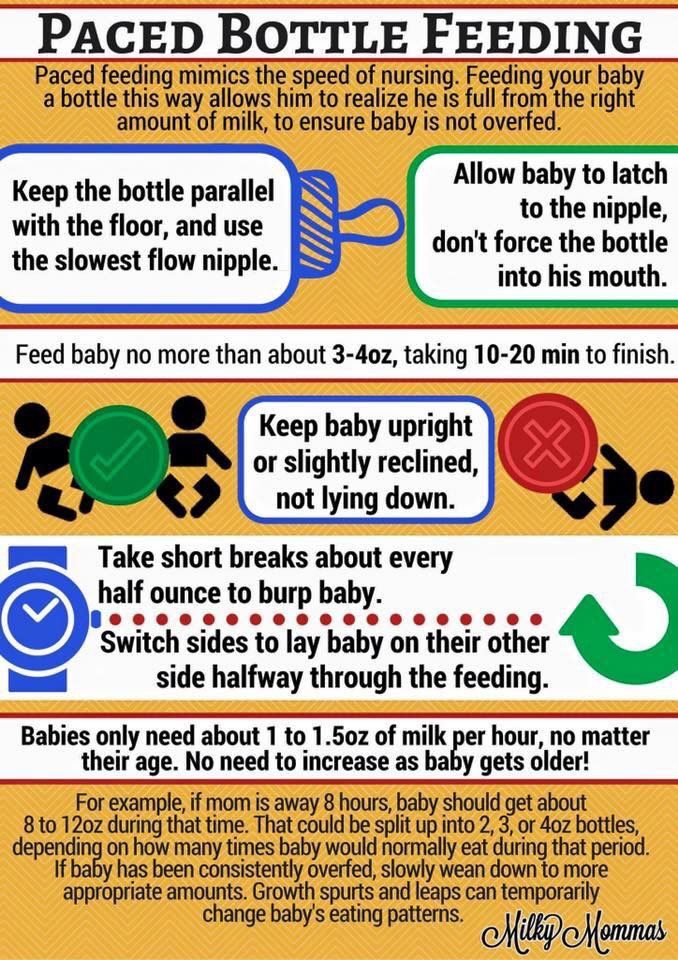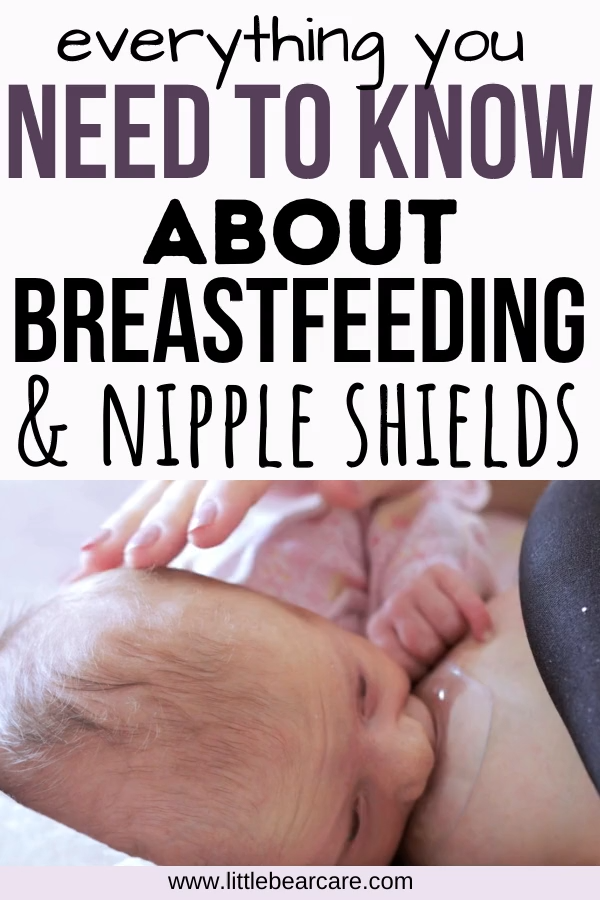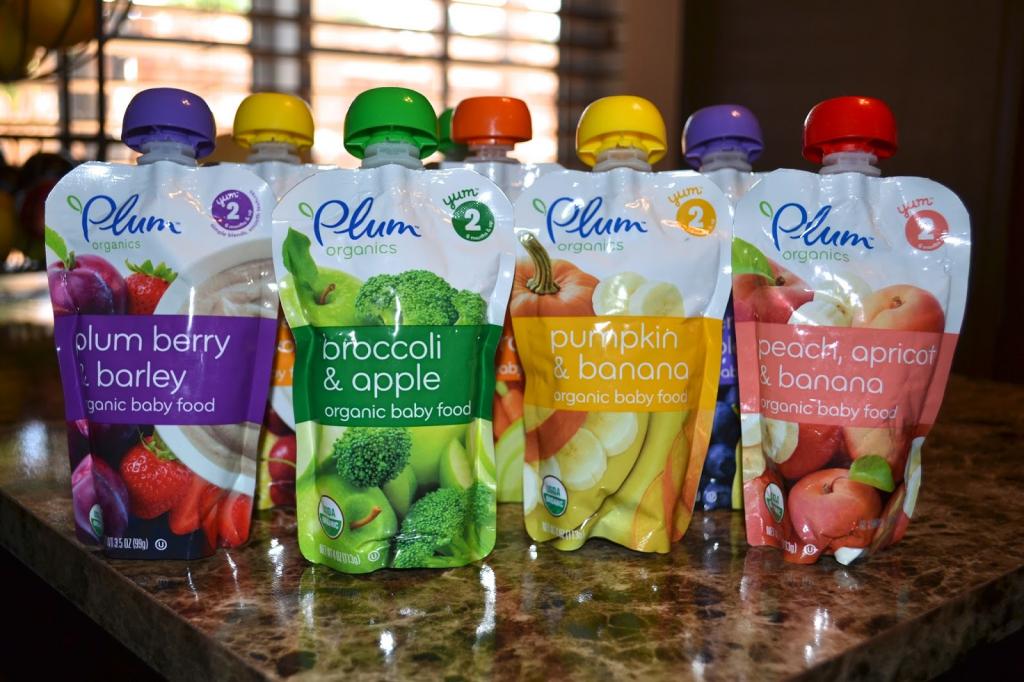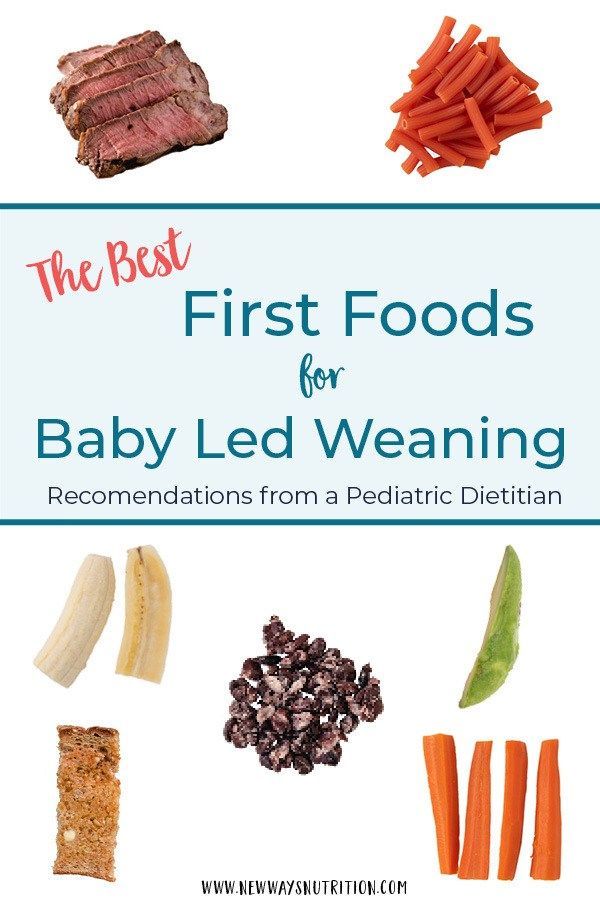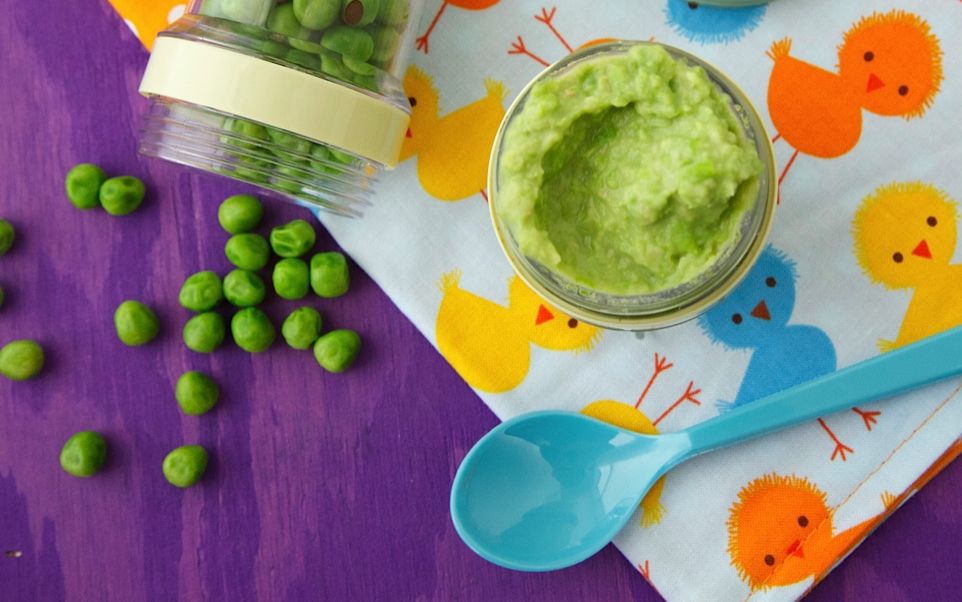Baby first food cereal
6 Top Picks and Expert Tips
After months of an all-liquid diet, baby is ready for a taste of solid food. To help make this exciting milestone go smoothly, you may decide to reach for baby cereal first—lots of parents do. With its plain flavor and adaptable consistency, baby cereal is the ultimate chameleon. It not only helps your little one adjust to the texture of solids, it can also be blended with new foods to help make them more palatable. It essentially acts as a bridge between liquid and solid—so this mealtime MVP probably won’t be in your pantry for the long haul. Still, there are some things to know before baby takes that first spoonful. For starters, when do babies start eating cereal—are there any dangers to be aware of? Ready for the full lowdown? Get the scoop on cereal for babies, including important safety information. Then, check out some baby cereals that deserve a spot on your kitchen shelf.
In this article:
What is baby cereal?
When do babies start eating cereal?
What is the best baby cereal to start with?
Are some baby cereals dangerous?
Best baby cereal to shop
What Is Baby Cereal?
Baby cereal is typically made of grains—think oats, rice, barley or quinoa—that are ground so fine, they turn into a smooth puree when mixed with breast milk, formula or water. This silky consistency is easy for babies to eat and digest. The whole purpose of baby cereal is to prepare baby for bigger and better things, explains Praveen Goday, MBBS, director of nutrition at Nationwide Children’s Hospital in Columbus, Ohio.
Baby cereals also pose a low allergy risk, so chances are your little eater can enjoy their meal without any worrisome side effects. Another benefit: Baby cereals are a good source of some vitamins and minerals, including iron, which is necessary for growth and development. The American Academy of Pediatrics (AAP) recommends that baby get extra iron around 4 to 6 months of age, when their natural stores of the mineral become depleted.
When Do Babies Start Eating Cereal?
You can start introducing solid foods, including baby cereals, around 4 to 6 months of age. If baby is younger than 4 months, stick to breast milk or formula, advises Goday. As with most milestones, baby will let you know when they’re ready to make the big move.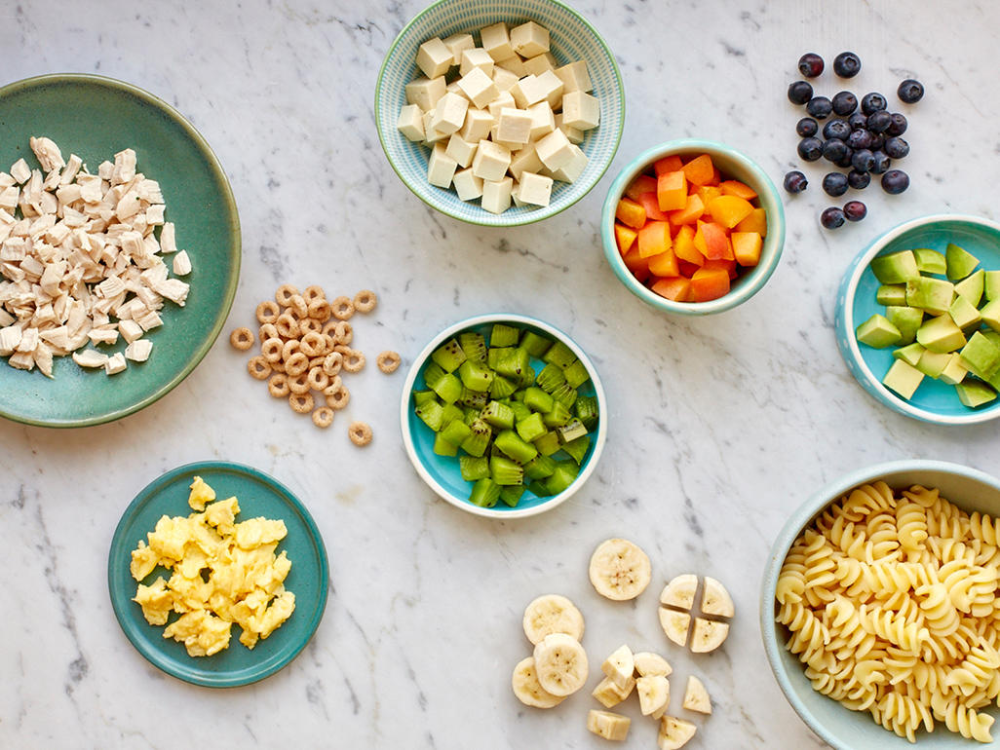 Goday shares some signs to look for:
Goday shares some signs to look for:
- Sits up in a high chair, feeding seat or infant seat with good head control
- Shows interest in food; for example, they intently watch you eat
- Seems hungry between regular feedings
- Opens their mouth when food is offered
- Swallows food from a spoon instead of pushing it out of their mouth
What is the best baby cereal to start with?
When you’re first serving up baby cereal, it’s a good idea to choose a single-grain, iron-fortified variety, says Goday. To help those first spoonfuls go down easier, he recommends mixing the cereal with breast milk or formula—whatever baby is already drinking. And hold off adding sugars or salt—plain and simple is best at this point.
The AAP recommends waiting three to five days before introducing a new single-ingredient food or cereal. This window of time lets you see if baby has any issues with that ingredient. Signs of a food allergy or allergic reaction include rash, bloating, diarrhea, vomiting, wheezing, hives and difficulty breathing, notes Goday.
Are Some Baby Cereals Dangerous?
Baby food made headlines in 2021, but for all the wrong reasons. The government released a report of its investigation into high levels of arsenic, lead and other heavy metals in baby foods, particularly those made with rice. Rice tends to soak up more arsenic than other crops, according to the Food and Drug Administration (FDA), and exposure to the heavy metal can be harmful for little bodies.
That said, you don’t need to bypass baby rice cereal altogether. Just make sure it’s one of a wide variety of grains and foods your baby eats, as that will help lower your baby’s exposure to the bad stuff, notes the AAP.
Can you put cereal in baby’s bottle?
Short answer: No. Adding cereal to your baby’s bottle presents a variety of potential risks, according to the AAP. In certain specific medical situations, your pediatrician may recommend putting infant cereal in a bottle; but, otherwise, plan on serving baby cereal at the appropriate time with a spoon, Goday says.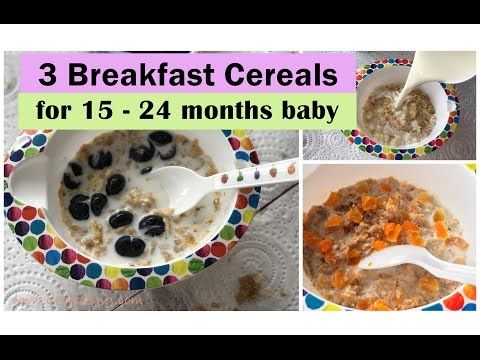
Best Baby Cereal to Shop
Ready to stock up on cereal for babies? You have no shortage of choices. To help narrow down your options, zero in on ones that are specifically made for babies, contain whole grains and are fortified with iron. Here are six baby cereal options worth considering.
Best baby cereal overall
Gerber Organic Single Grain Oatmeal Baby Cereal, 8 oz.
It’s easy to see why Gerber’s organic single-grain oatmeal baby cereal is a reliable go-to for parents. Made of highly ground whole grain oats, it provides the simplicity beginner eaters need while also packing a nutritious punch. Each serving offers your baby iron, zinc, calcium, vitamin C and six B vitamins.
Best organic baby cereal
Earth’s Best Organic Whole Grain Baby Oatmeal Cereal, 8 oz.
If you prefer to start your kiddo on an organic baby cereal, consider this one from Earth’s Best. It contains organic whole grain oats and an assortment of vitamins and minerals—think iron, zinc, vitamin E and B vitamins.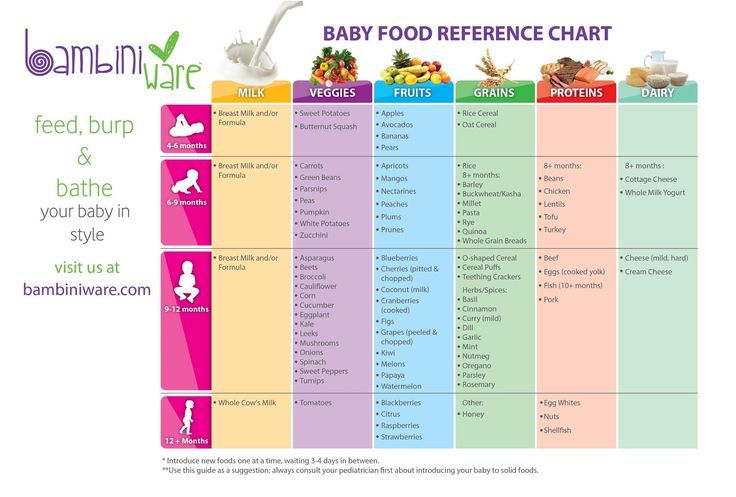 What’s more, the ingredients are grown free of potentially harmful pesticides, so you can feel good about what you’re serving.
What’s more, the ingredients are grown free of potentially harmful pesticides, so you can feel good about what you’re serving.
Best rice cereal for baby
Earth’s Best Organic Infant Rice Cereal, 8 oz.
Want to round out your little one’s diet with a baby rice cereal? Look no further than this offering from Earth’s Best. It’s made of USDA-certified organic rice grains and comes fortified with iron for baby’s growth and development. Of course, parents may be just as interested in what the cereal doesn’t contain. There are no genetically engineered ingredients, no artificial colors, no flavors and no preservatives in this rice cereal for baby.
Best oatmeal cereal for baby
Beech-Nut Stage 1 Organic Oatmeal Cereal, 8 oz.
Always start your day with oatmeal? Now your little eater can enjoy a hearty bowl of their own too. Made of organic whole grain oats, this baby oatmeal cereal from Beech-Nut mixes easily into a mild-tasting, easy-to-digest puree while also delivering important vitamins and minerals, including iron, zinc, calcium and vitamin D.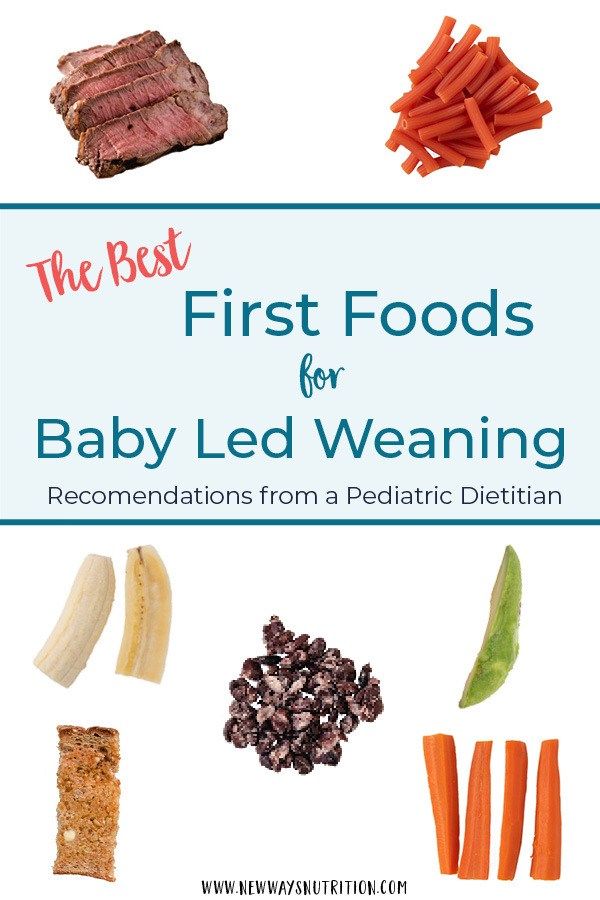
Best single grain baby cereal
Gerber Single Grain Rice Baby Cereal
Simple is best when it comes to cereal for babies, and this single-grain offering from Gerber does not disappoint. Made of finely ground non-GMO rice, it’s a cinch to prepare—just add breast milk, formula or distilled baby water and serve. Two servings provide your baby with 90 percent of their daily value of iron, plus vitamin C, vitamin E, zinc, calcium and six B vitamins.
Best multigrain baby cereal
Earth’s Best Organic Multi-Grain Infant Cereal, 8 oz.
Once your kiddo has had a chance to try a single grain cereal, try adding a multigrain variety to the menu. One to check out: Earth’s Best, which is made from a blend of organic whole grain oats, barley and spelt. In addition to being nourishing, this baby cereal is also healthy, as each serving contains iron, zinc and B vitamins.
About the expert:
Praveen Goday, MBBS, is the director of nutrition at Nationwide Children’s Hospital in Columbus, Ohio. He is also a professor at the Ohio State University. He earned his bachelor of medicine, bachelor of surgery degree at Madras Medical College in Chennai, India.
He is also a professor at the Ohio State University. He earned his bachelor of medicine, bachelor of surgery degree at Madras Medical College in Chennai, India.
When Can My Baby Start Eating Solid Foods? (for Parents)
A friend just started giving her 3-month-old applesauce and rice cereal. My son is just 2 weeks younger than hers, and I am wondering if I should be introducing solids soon too. When should I start?
– Taylor
Doctors recommend waiting until a baby is about 6 months old to start solid foods. Starting before 4 months is not recommended.
At about 6 months, babies need the added nutrition — such as iron and zinc — that solid foods provide. It’s also the right time to introduce your infant to new tastes and textures.
Some babies may be ready for solids sooner than 6 months, but don't start until your baby is at least 4 months old.
How do you know it’s the right time to start solid foods? Here are some signs that babies are ready:
- They have good head and neck control and sit up in a high chair.

- They're interested in foods. For example, they may watch others eat, reach for food, and open their mouths when food approaches.
- They don’t push food out of their mouths, which is a natural tongue reflex that disappears when they’re between 4–6 months old.
- They weigh twice their birth weight, or close to it.
Talk to your doctor about the right time to start solid foods.
How Should I Start Solids?
When the time is right, you can start with a single-grain, iron-fortified baby cereal. Start with 1 or 2 tablespoons of cereal mixed with breast milk, formula, or water. Feed your baby with a small baby spoon. Don’t add cereal or other food to a baby's bottle because it can lead to too much weight gain. Let your baby practice eating from a spoon and learn to stop when full.
When your baby gets the hang of eating the first food, introduce others, such as puréed meat, fruits, vegetables, beans, lentils, or yogurt. Try one food at a time and wait a few days before trying something else new to make sure your baby doesn't have an allergic reaction.
Foods that are more likely to cause allergies can be among the foods you introduce to your baby. These include peanuts, eggs, cow’s milk, seafood, nuts, wheat, and soy. Waiting to start these foods does not prevent food allergies. Talk to your doctor if you are concerned about food allergies, especially if any close family members have allergies, food allergies, or allergy-related conditions, like eczema or asthma.
Infants with severe eczema or egg allergies are more likely to have allergies to peanuts. Talk to your doctor about how and when to introduce these foods to your child.
When starting your baby on solids, avoid:
- foods with added sugars and no-calorie sweeteners
- high-sodium foods
- honey, until after the first birthday. It can cause botulism in babies.
- unpasteurized juice, milk, yogurt, or cheese
- regular cow's milk or soy drinks before 12 months instead of breast milk or formula. It’s OK to offer pasteurized yogurt and cheese.

- foods that may cause choking, such as hot dogs, raw carrots, grapes, popcorn, and nuts
Also, do not give fruit juices to infants younger than 12 months old.
Over the next few months, introduce a variety of foods from all the food groups. If your baby doesn't seem to like something, don’t give up. It can take 8 to 10 tries or more before babies learn to like new foods.
Reviewed by: Mary L. Gavin, MD
Date reviewed: February 2021
from how many months to introduce oatmeal to a child
Published: 09.12.2019
Reading time: 4 min.
Number of reads: 48375
Oatmeal is the most popular breakfast among residents of many countries. The excellent taste of this dish and the energy boost of slow-digesting carbohydrates make for a good start to the day for all family members. The word "oats" comes from the Latin avere, which means "to be healthy". Oatmeal is also known under the name "oatmeal" - after the name of the ancient Greek mythological hero, endowed with great physical strength and endurance.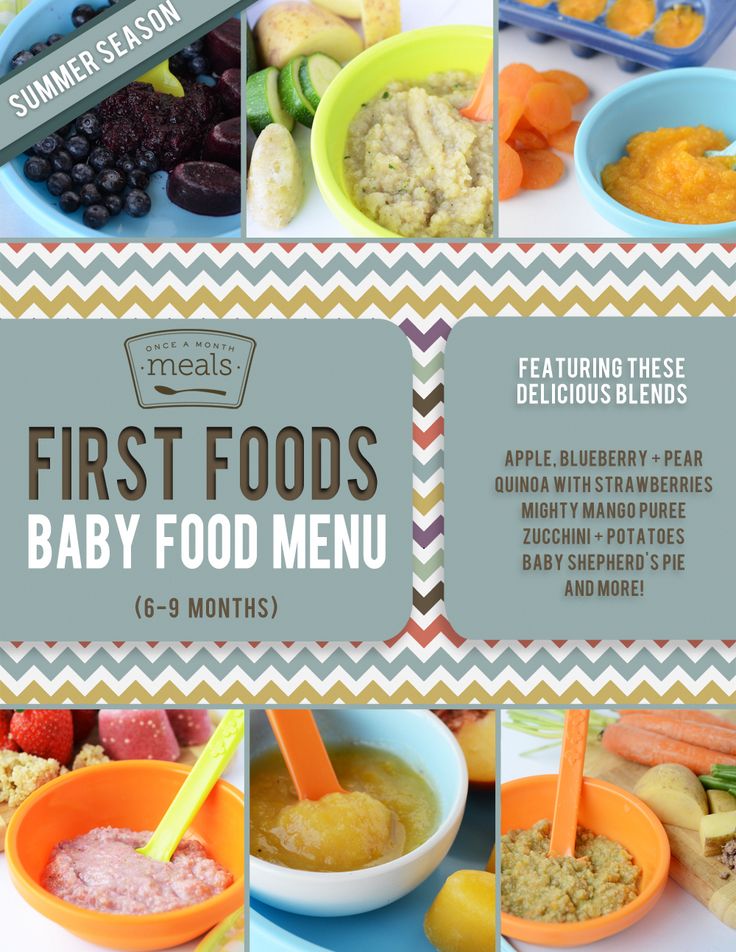 Oatmeal is included in the mandatory diet of not only Olympic champions, this product appears one of the first on the baby's menu in the first year of life. Let's look at why oatmeal occupies an honorable place in the pyramid of healthy eating and when to introduce this healthy product into the child's diet. nine0003
Oatmeal is included in the mandatory diet of not only Olympic champions, this product appears one of the first on the baby's menu in the first year of life. Let's look at why oatmeal occupies an honorable place in the pyramid of healthy eating and when to introduce this healthy product into the child's diet. nine0003
Content: Hide
- Oat carbohydrates
- Oat proteins and fats
- Biologically active substances of oats
- Timing of the introduction of cereal complementary foods
- Oatmeal Safety
- Choice of porridge
- Oatmeal Bebi Premium
Oat carbohydrates
All cereals are a source of carbohydrates, primarily starch, which determines a burst of energy and a long-lasting feeling of fullness after eating porridge. This is due to the slow digestion and gradual assimilation of the product. Oatmeal is rich in starch, but compared to other cereals, its proportion is less. However, starch grains are very small, which determines its almost complete assimilation. The rest of the slowly digestible carbohydrates are dietary fiber, and oatmeal surpasses many cereals in the content of this component. Vegetable fiber is very important for the normal process of digestion and also serves as a natural food for the gut microbiome. Maintaining the numerical composition and diversity of one's own intestinal microflora is an indisputable factor in human health. Oatmeal contains unique soluble dietary fiber, which has an enveloping effect, protecting the mucous membrane of the stomach and intestines. In addition, oat fiber helps to eliminate toxins and has a positive effect on cholesterol levels. Products based on oatmeal are used not only in the diet of a healthy person, but also in therapeutic nutrition schemes. nine0003
The rest of the slowly digestible carbohydrates are dietary fiber, and oatmeal surpasses many cereals in the content of this component. Vegetable fiber is very important for the normal process of digestion and also serves as a natural food for the gut microbiome. Maintaining the numerical composition and diversity of one's own intestinal microflora is an indisputable factor in human health. Oatmeal contains unique soluble dietary fiber, which has an enveloping effect, protecting the mucous membrane of the stomach and intestines. In addition, oat fiber helps to eliminate toxins and has a positive effect on cholesterol levels. Products based on oatmeal are used not only in the diet of a healthy person, but also in therapeutic nutrition schemes. nine0003
Proteins and fats of oats
Oat groats in terms of vegetable protein content can only compete with buckwheat and are significantly superior to other cultivated grains in this characteristic. In addition to the quantitative content, the qualitative composition of the protein is very important: oatmeal contains almost all essential amino acids in a balanced ratio. These substances are not synthesized in the human body, but are absolutely necessary for life, especially during periods of intensive growth. Among them, the content of lysine, methionine and tryptophan is especially important. These amino acids are very important for the development of the immune and nervous systems. Oat protein is easily digestible, therefore products based on this cereal are widely recommended in dietary and baby food. Oatmeal contains a fairly large amount of vegetable fats, which also determines the high nutritional value of the product. They are easy to digest, almost completely absorbed and stable to oxidation. The qualitative composition of oat oils is also important, which is characterized by the content of essential fatty acids (oleic, linoleic and linolenic) in the most favorable ratio. nine0003
Biologically active substances of oats
Useful properties of oat groats are connected not only with the content of essential nutrients. The restorative effect and a positive effect on the work of almost all organs and systems of the body are also determined by the micronutrients included in the composition. The high content of B vitamins (especially B 1 and biotin) has a beneficial effect on metabolism and ensures high performance. In combination with a sufficient intake of magnesium, and oats are also rich in this mineral, a person’s mental activity improves, sleep and mood normalize. Oatmeal is rich in vitamin E, which is necessary for the functioning of the immune and reproductive systems, has a positive effect on the condition of the skin and hair. The high content of silicon and phosphorus has a beneficial effect on physical development, musculoskeletal system and linear growth. In terms of the content of trace elements such as copper and manganese, oats absolutely surpass other cereals. Copper is part of numerous enzymes that provide cellular respiration, as well as liver cells that neutralize toxins. Manganese is very important for hematopoiesis and energy metabolism. Oat grains are a natural source of flavonoids that protect cells from destruction and premature aging.
The high content of B vitamins (especially B 1 and biotin) has a beneficial effect on metabolism and ensures high performance. In combination with a sufficient intake of magnesium, and oats are also rich in this mineral, a person’s mental activity improves, sleep and mood normalize. Oatmeal is rich in vitamin E, which is necessary for the functioning of the immune and reproductive systems, has a positive effect on the condition of the skin and hair. The high content of silicon and phosphorus has a beneficial effect on physical development, musculoskeletal system and linear growth. In terms of the content of trace elements such as copper and manganese, oats absolutely surpass other cereals. Copper is part of numerous enzymes that provide cellular respiration, as well as liver cells that neutralize toxins. Manganese is very important for hematopoiesis and energy metabolism. Oat grains are a natural source of flavonoids that protect cells from destruction and premature aging. nine0003
Timing of the introduction of cereals
At what age can this healthy and nutritious product be introduced into the baby's diet? For the first four months of life, the baby's body can only absorb mother's milk or an adapted mixture, since the gastrointestinal tract and kidneys are still functionally immature. The process of maturation is individual, but for most infants, by the 4-6th month of life, it is already possible to introduce complementary foods. Moreover, by this age, the nutritional value of breast milk or formula is no longer enough to ensure intensive growth and development of the baby. There is a need to expand the diet. Cereal products are the most preferred choice of first complementary foods. They are distinguished by high nutritional and energy value, the content of almost all essential nutrients, as well as good compatibility with breast milk. As the first complementary food product, a baby can be offered dairy-free porridge or cooked on the basis of mother's milk. The familiar taste will allow the child to quickly adapt to changes in nutrition, which will facilitate the introduction of complementary foods in the future. nine0003
Oatmeal safety
At what age can I start complementary foods with oatmeal? The introduction of cereals in the first 6 months of life has limitations associated with the possible toxic effect on intestinal cells of vegetable gluten protein. Early mucosal contact with this protein can cause serious disease. Therefore, the list of cereals that can be used for the first feeding includes rice, corn and buckwheat. The question of the toxicity of oats for the immature mucosa of the baby still remains completely unresolved. According to most experts, oatmeal is a safe protein, but oatmeal can be contaminated with impurities from other cereals. Therefore, this product is introduced into the child's diet after 5 months of life. nine0003
Choice of porridge
How to prepare oatmeal for baby food? This is a simple but at the same time very important practical question. Despite the apparent simplicity of home-made cereals, specialized baby food products are the preferred choice. The modern level of industrial production determines the high quality standard of finished products so that every child can get the best for healthy growth and development. Bebi Premium baby food cereals are a well-thought-out recipe that meets the needs of a child in every age period, and guaranteed quality of raw materials, at all stages of production in accordance with international safety standards. nine0003
Despite the apparent simplicity of home-made cereals, specialized baby food products are the preferred choice. The modern level of industrial production determines the high quality standard of finished products so that every child can get the best for healthy growth and development. Bebi Premium baby food cereals are a well-thought-out recipe that meets the needs of a child in every age period, and guaranteed quality of raw materials, at all stages of production in accordance with international safety standards. nine0003
Bebi Premium oatmeal
All Bebi Premium oatmeal porridges are made on the basis of cereals, not flakes, which allows you to preserve the beneficial properties of the grain shell as much as possible. In their production, a special technology of grain processing and subsequent drying is used, which makes it possible to produce cereals based on cereals, but no heat treatment is required during cooking. At the same time, a delicate taste and the necessary degree of grinding of the finished product are preserved. A great choice to start your oatmeal introduction to babies over 5 months old is Bebi Premium Oatmeal Without Dairy. In addition to the beneficial properties of oatmeal, the composition of the product is enriched with the natural prebiotic inulin, as well as a unique vitamin and mineral complex. Then the baby can be offered another tasty and nutritious product of the Bebi Premium line - “Oatmeal porridge with milk”. All Bebi Premium milk porridges contain special baby milk, which is allowed from 4 months of age. To further enrich the diet with pectins, sugars and organic acids, the menu can be expanded with cereals with fruit and vegetable components. "Oatmeal porridge with peach and milk" Bebi Premium contains 100% natural peach puree, which gives the product natural sweetness, expands the range of taste sensations and gradually prepares the baby for the introduction of fruit and berry complementary foods. In children of the second half of life, multi-cereal products can be safely included in the menu.
A great choice to start your oatmeal introduction to babies over 5 months old is Bebi Premium Oatmeal Without Dairy. In addition to the beneficial properties of oatmeal, the composition of the product is enriched with the natural prebiotic inulin, as well as a unique vitamin and mineral complex. Then the baby can be offered another tasty and nutritious product of the Bebi Premium line - “Oatmeal porridge with milk”. All Bebi Premium milk porridges contain special baby milk, which is allowed from 4 months of age. To further enrich the diet with pectins, sugars and organic acids, the menu can be expanded with cereals with fruit and vegetable components. "Oatmeal porridge with peach and milk" Bebi Premium contains 100% natural peach puree, which gives the product natural sweetness, expands the range of taste sensations and gradually prepares the baby for the introduction of fruit and berry complementary foods. In children of the second half of life, multi-cereal products can be safely included in the menu. Oatmeal is a part of multi-component dairy and dairy-free cereals of the Bebi Premium line, which allows you to use the benefits of different cereals to improve your baby's health. nine0003
Oatmeal is a part of multi-component dairy and dairy-free cereals of the Bebi Premium line, which allows you to use the benefits of different cereals to improve your baby's health. nine0003
#First food #Nutrition for children up to a year #Complementary food
Rate the article
(Number of votes: 13, average 5.0)
Share with friends:
What kind of porridge to choose for the first feeding | How to introduce porridge: how to cook, properly breed porridge for the first feeding
Your baby is growing up, getting stronger, gaining weight, and now there comes a moment when feeding only breast milk or formula is not enough for the full development of the crumbs. It's time to introduce complementary foods into your baby's diet. The question arises - where to start? Your pediatrician should answer it. nine0003
Today we’ll talk about how to properly introduce complementary foods with cereals. Let's talk about how to breed porridge, which one is better to choose for the first feeding, and how homemade porridge differs from store-bought.
Let's talk about how to breed porridge, which one is better to choose for the first feeding, and how homemade porridge differs from store-bought.
Cereals for children under one year old
Porridge contains all the necessary set of trace elements, is perfectly absorbed, and has a beneficial effect on the digestive system.
Usually, cereals begin to be introduced into the diet of a baby at the age of six months. If the child is bottle-fed, it is permissible to start earlier, at 4-5 months. These are only approximate dates, in fact, everything is individual. It is necessary to take into account the pace of development of the child, his readiness for adult food and the tendency to allergic reactions. nine0003
Complementary foods with cereals are recommended for children who are not gaining weight well. Most likely, the baby simply does not have enough calories. In any case, before starting complementary foods, a pediatrician should be consulted. He will help you choose porridge, tell you in what quantities and how often to feed her child.
He will help you choose porridge, tell you in what quantities and how often to feed her child.
It is important that the first porridge be:
- Industrial production . Not only because the raw materials are sterilized and undergo rigorous quality control. But also because at home it is difficult to achieve such a degree of grinding cereals, as cereal manufacturers do. For example, Materna porridges consist of delicate cereal flakes, which form an absolutely homogeneous mass when brewed. If desired, they can be diluted to a thick mixture and offered to the baby to drink from a bottle. nine0016
- Single component . To track down the cause of an allergic reaction if it occurs.
Dairy or non-dairy: with which cereals do you start your first complementary foods
Pediatricians recommend starting complementary foods with dairy-free gluten-free cereals. Gluten is a fairly heavy vegetable protein for digestion by a child's body. Its use can lead to allergies. Dairy-free cereals can be diluted with breast milk or your own milk formula to make them more nutritious and taste more familiar to the baby. nine0003
Its use can lead to allergies. Dairy-free cereals can be diluted with breast milk or your own milk formula to make them more nutritious and taste more familiar to the baby. nine0003
The first gluten-free cereals include: corn, rice and buckwheat.
How to switch from dairy-free to milk porridge
If no allergic reactions occur within 4-7 weeks from the start of complementary foods and dairy-free cereals are well absorbed, you can start offering milk cereals for children up to a year old to the baby, their energy value is much higher.
How to properly organize complementary foods with cereals
For the first acquaintance, you need to cook a five percent porridge, which means that for five grams of dry porridge there should be 100 mg of water. The resulting consistency will be ideal for a child who is not yet able to chew and swallow thick food. nine0003
The best time to feed is the morning meal. So you will have time to track the baby's reaction to a new product: if there are any allergies or stool disorders.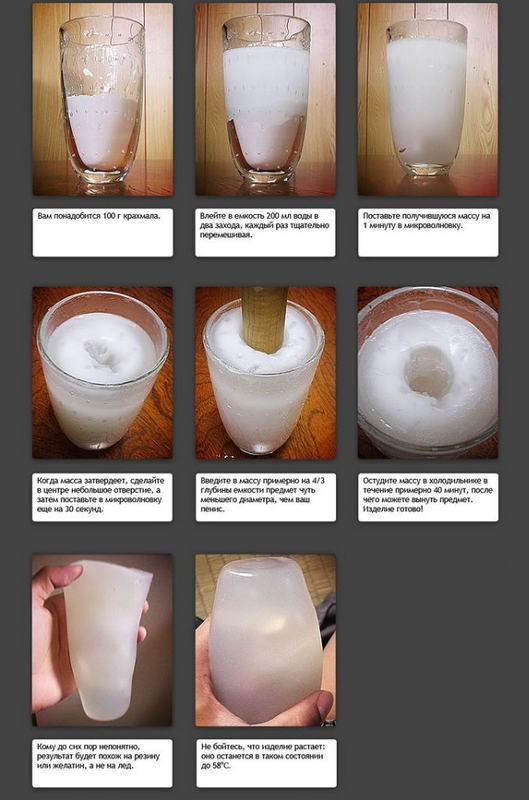
For feeding, a baby spoon made of safe material for the baby's delicate gums or a regular teaspoon is used.
As a first test, it is enough to give the child about half a tablespoon of liquid porridge. The kid should try out a new product, get used to the change in texture and taste. nine0003
Make sure the porridge is not too cold or hot, and does not contain lumps.
After porridge feeding, feed your baby his usual food - breast milk or formula.
Increase the volume of a serving of porridge only when you are sure that the baby eats it with pleasure, and he does not experience unwanted reactions.
Every day, increase the amount of porridge per spoon until the serving is 150 g for a six-month-old baby, 160-170 g for a child aged 7-8 months and 170-180 g for an age of 8-9months. Closer to the year, the serving volume will be about 200 g. And the five percent porridge is replaced by a thicker, ten percent one.
We remind you that these are only general recommendations, and the development of each child is individual and the dosage may differ from that described above. It is important not to change cereals at the beginning of complementary foods, your baby should get used to one cereal, and only after a successful debut, you can offer the next one - not earlier than in two weeks.
It is important not to change cereals at the beginning of complementary foods, your baby should get used to one cereal, and only after a successful debut, you can offer the next one - not earlier than in two weeks.
If you start experimenting ahead of time and give your child a different porridge every day, in case of an allergy, it will be very difficult for you to understand what exactly the child's body reacted to. nine0003
The child does not eat porridge
Toddlers refuse porridge for various reasons.
- Don't like the taste or texture.
It happens that children who started complementary foods with fruits and vegetables do not eat porridge, because their taste is very different and not so bright. Try adding an already familiar apple or broccoli to a new porridge. In addition, a child may not like the taste of some cereal today, but in a couple of weeks he will eat it with pleasure. Set this mess aside for a while and try again later. nine0016
nine0016 - The porridge is too hot or too cold.
Check food temperature on the inside of your wrist. If you do not feel cold or hot, then the temperature is optimal. - The child is not yet hungry. Set the plate aside for half an hour and then try again.
The main advice to parents is not to despair, and offer the same porridge many times in different combinations.
What kind of porridge to introduce into complementary foods first
Be sure to ask your pediatrician for advice on which cereal to give your baby first. After all, all kids are different.
The main types of cereals recommended for consistent introduction into the child's diet:
- Buckwheat porridge . It is considered indispensable in the diet of the child. Contains vitamins B1 and B2, iron, magnesium, protein.
- Rice porridge . Contrary to the common misconception of many parents, baby rice porridge will not cause constipation because it does not contain crushed rice.
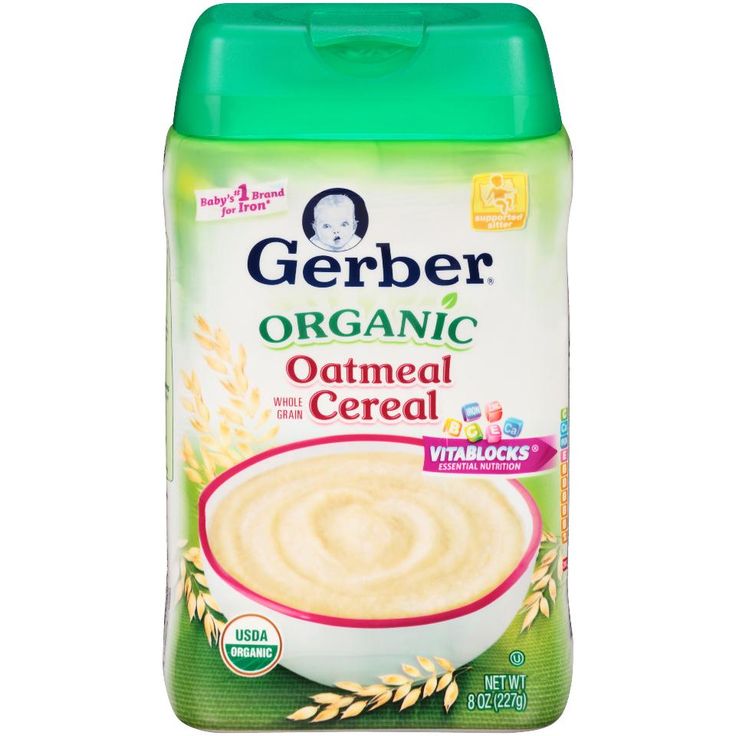
Learn more

